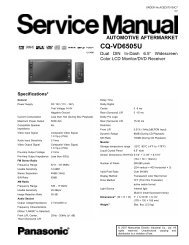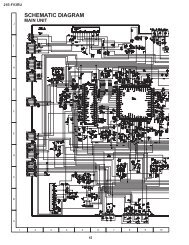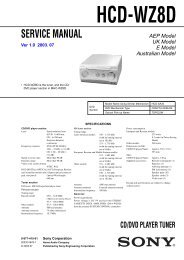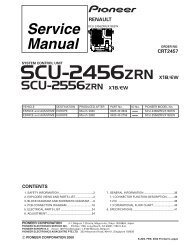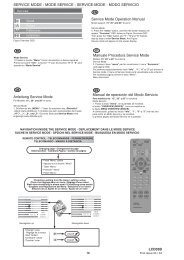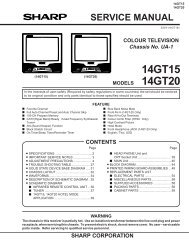Technology of Q 2500 colour TV set
Technology of Q 2500 colour TV set
Technology of Q 2500 colour TV set
Create successful ePaper yourself
Turn your PDF publications into a flip-book with our unique Google optimized e-Paper software.
<strong>Technology</strong> <strong>of</strong> Q <strong>2500</strong> <strong>colour</strong> <strong>TV</strong> <strong>set</strong>JJJJSum <strong>of</strong> RGBsignalstHorontaldeflectioncurrentSum <strong>of</strong> deflectionand correctionsignaltCorrectionsignal(magnified)ttTo really understand the operation <strong>of</strong> thespeed modulator we must look at the lightcharacteristics <strong>of</strong> the pixels on the c.r.t. Thelonger a pixel is irradiated, the more intensivelyit shines, and the persistence <strong>of</strong> thefluorescent image is also longer.If the signal jumps from dark to light, the deflectionis initially accelerated briefly andthereafter remains mainly on one point. In thisway the first “bright“ pixel is irradiated forlonger and therefore shines more brightly. Atthe same time the last “dark“ pixel has moretime to fade and is irradiated for a shortertime.If the signal jumps from light to dark, however,this initially causes braking and then deceleration<strong>of</strong> the deflection in the speed modulator.This means the last “light“ pixel is irradiatedlonger and therefore shines more brightly. Onthe other hand, the first “dark“ pixel is irradiatedfor a shorter period.In both cases another, simultaneous effectoccurs. The signal change occurs while theelectron beam, without almost any further deflection,remains on the last “bright“ pixel.Pixels onscreenDocument Q <strong>2500</strong> 35 © Loewe ProCollege






